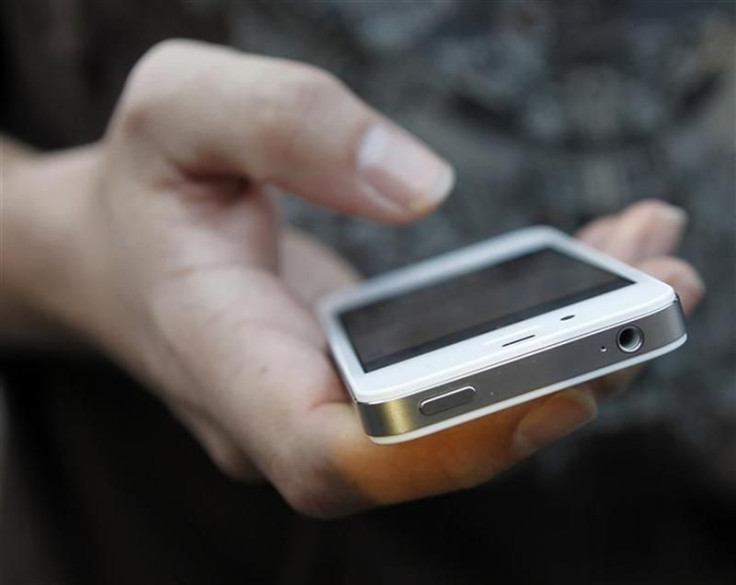Retailers Adapt as Mobile Holiday Shopping Booms

When it comes to holiday shopping, more people are phoning it in, forcing retailers to embrace new ways to connect or else lose sales.
Lowe's Companies, Best Buy and Toys R Us are among retailers making big changes to prepare for a wave of holiday shoppers who will use smart phones to research products, check rivals' prices and make purchases.
The shopping experience is in the consumer's hands and you can't fight where they're going, said Gihad Jawhar, vice president of Lowes.com, the website of the second-largest home-improvement company. Retailers can either hop on the bus or get left behind. We are choosing the first option.
Lowe's is issuing more than 42,000 Apple iPhones to employees in more than 1,700 stores.
When shoppers are in Lowes stores scanning bar codes with their phones, reading product reviews and checking prices, employees can engage them better using iPhones to track down similar information.
Staff can also check quickly if products are in stock or if items are available on Lowes' website or another store nearby, and can often match or beat a price a consumer finds elsewhere via a smart phone.
Best Buy has 63 so-called connected stores in which employees have been given mobile devices and are encouraged to use their own smart phones to help shoppers research products and check inventory.
Employees are empowered to make the decision to match a competitor price on the spot, a spokeswoman for Best Buy added.
More than 40 percent of retailers this year have a policy of at least competing with lower online prices found through mobile comparisons. Ahead of last year's holiday season, most retailers were still in denial about this trend, according to research firm RSR.
The mobile shopping boom is putting billions of dollars in sales up for grabs in an industry that is being pummeled by lackluster economic growth and weak consumer confidence.
U.S. retail e-commerce holiday sales will rise 17 percent to $46.7 billion in 2011, while total retail sales will grow about 3 percent this season, eMarketer forecast on Thursday.
But mobile commerce is growing even faster.
The 300 largest U.S. mobile merchants, led by Amazon.com Inc, will generate $5.37 billion in sales through mobile devices this year, more than double 2010, according to a recent survey by Internet Retailer.
PEAK MOBILE SHOPPING DAY
A recent survey of shoppers by the National Retail Federation found that 40 percent own a smart phone and more than half of those people plan to use their device to research products or make a purchase this holiday.
The peak day for mobile holiday shopping is expected to be the second Sunday in December (December 11 this year), according to PayPal, the online payments business owned by eBay Inc. That's the last non-work day when orders will be shipped in time for Christmas.
Last year on that day, total payment volume, or TPV, transmitted by mobile devices through PayPal's system was $4.7 million. This year PayPal expects more than $10 million of TPV on that shopping day.
Retailers are waking up to the fact that shopping is changing very rapidly. Some wish that weren't true -- they would like to ban smart phones in their stores, said John Donahoe, chief executive of eBay. But others are embracing it. They have got to get to where consumers are making their decisions.
Amazon, eBay and J.C. Penney are among potential winners from the mobile shopping boom, according to Paula Rosenblum, managing partner at RSR.
J.C. Penney launched a mobile version of its website earlier than many traditional retailers and included easy-to-use features such as wish lists that can be shared with friends, Rosenblum said.
J.C. Penney has seen weak sales recently, but Rosenblum said the long-term result of having a strong mobile offering should be increased same-store sales growth.
Some retailers may have done nothing in mobile and still have rising year-over-year sales, but long-term that won't last, Rosenblum added.
DRIVING SHOPPERS TO STORES
EBay recently launched a new version of its Red Laser app, which lets shoppers scan bar codes and check prices at other retailers with their smart phones. Amazon also unveiled a new version of its Price Check app this week.
Red Laser now includes local inventory data from Milo, a business eBay bought last year, and a PayPal mobile checkout button. There is also a button smart phone users can tap to pick up their holiday items at physical store locations.
Retailers including Toys R Us, the largest toy retailer in the United States, and Best Buy have shared local inventory data with Milo. That means shoppers using the Red Laser smart phone app may buy something from them and end up at their physical stores.
Unlike the Internet alone -- which has pulled more sales out of stores -- mobile commerce can actually help brick-and-mortar retailers get a sale, by telling shoppers where to find the deals and items they want while they are actually out shopping.
That's a big deal for retailers, after so many years when the Internet has been driving consumers away from stores, said Cyriac Roeding, chief executive of Shopkick, which has a location-based mobile shopping app.
Shopkick's app encourages its 2.5 million users to visit stores by sending discounts and rewards to their smart phones when they scan product bar codes.
(Reporting by Alistair Barr; Editing by Brad Dorfman, Bernard Orr and Maureen Bavdek)
© Copyright Thomson Reuters 2024. All rights reserved.





















